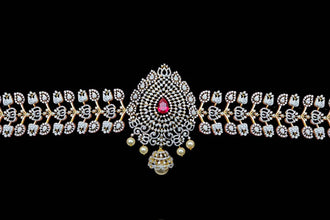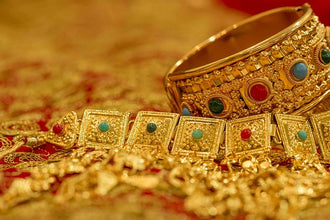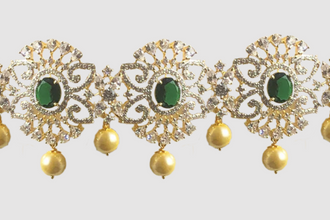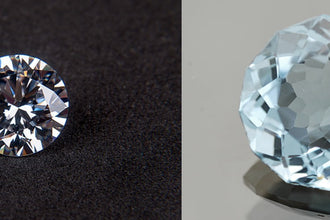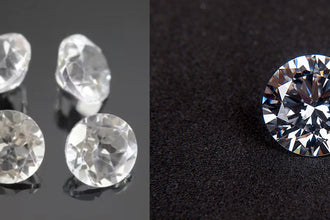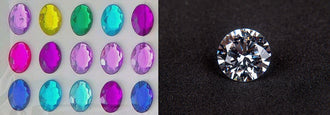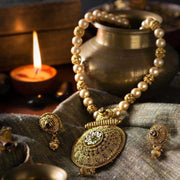
South Indian jewellery has a long and rich history that spans over thousands of years. The early designs were simple and mostly made of gold, with minimal use of precious stones or intricate patterns. However, as time passed, South Indian jewellery evolved to become more elaborate and ornate, incorporating a wide range of materials such as diamonds, emeralds, and rubies.
One of the most significant influences on the evolution of South Indian jewellery has been the various dynasties that have ruled over the region throughout history. The Chola, Pandya, and Vijayanagara dynasties were particularly renowned for their patronage of the arts, including jewellery making. As a result, many of the most iconic South Indian jewellery designs have been inspired by the styles and motifs of these dynasties.

Another important factor that has influenced the evolution of South Indian jewellery is religion. Hinduism, in particular, has had a significant impact on the design of South Indian jewellery. Many of the traditional pieces, such as the Maang Tikka, the Nath, and the Mathapatti, are associated with Hindu rituals and ceremonies. As a result, South Indian jewellery has become an integral part of Hindu culture and tradition.
However, the emotions associated with South Indian jewellery go beyond tradition and religion. For many people, wearing South Indian jewellery is a way to express their individuality and personality. It is a way to add a touch of glamour and sophistication to their outfits and make a statement. For others, South Indian jewellery is a reminder of their loved ones and the memories they hold dear.

The emotions associated with South Indian jewellery are not limited to just the wearers. The artisans who create these beautiful pieces also experience a range of emotions throughout the process. For many, jewellery making is not just a job; it is a form of art that requires passion, creativity, and skill. The process of creating each piece is a labor of love, and the artisans take great pride in their work.
In recent years, the emotions associated with South Indian jewellery have taken on a new meaning. As people have become more conscious of the environment and social responsibility, there has been a growing demand for sustainable and ethical jewellery. Many South Indian jewellery makers have responded to this demand by using eco-friendly materials and supporting local artisans. As a result, wearing South Indian jewellery has become not just a symbol of culture and tradition, but also a way to support ethical and sustainable practices.

In conclusion, South Indian jewellery is not just an accessory; it is a representation of culture, tradition, and emotion. The evolution of South Indian jewellery over the years has been closely tied to the emotions and sentiments of the people, from the simple designs of the ancient times to the elaborate and ornate pieces of today. For the wearers and the artisans alike, South Indian jewellery is a way to express themselves, connect with their roots, and support ethical and sustainable practices.


